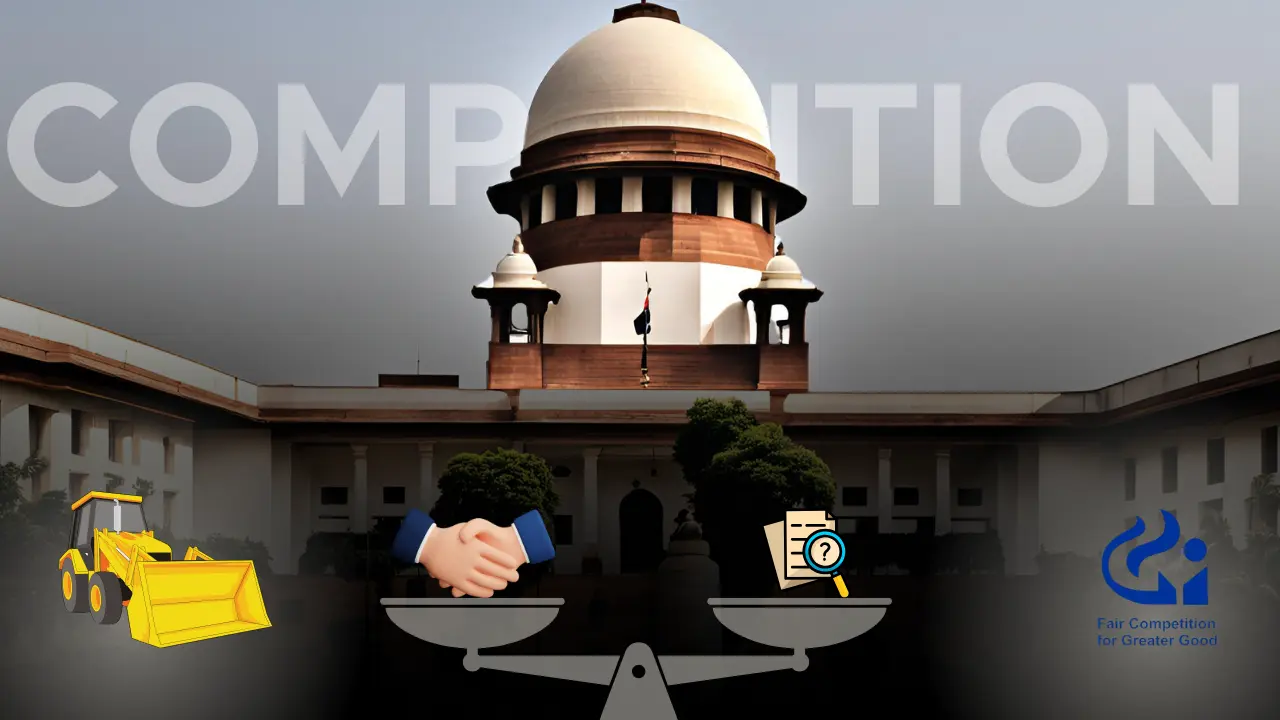Introduction
The jurisprudence of insolvency law, where financial creditor rights, formation of CoC1 and the CIRP2 goes even, until a related party enters the scenario. When the only financial creditor of a corporate debtor is a related party, certain legal and procedural implications may arise. One such legal knot lies at the intersection of formation of CoC and the statutory bar imposed by section 21(2) of IBC3 on a related party. This is the precise legal quandary in STROS-Sedlcanske Strojirny, a.s. v. Poonam Basak (IRP)4 filed before the Principal Bench of NCLAT5 , New Delhi Bench.
The Hon’ble Bench, comprising of Mr. N. Seshasayee (Judicial Member) Mr. Arun Baroka (Technical Member) Indevar Pandey (Technical Member) critically examined this legal issue with comprehensive reasoning and analysis. They held that a related party financial creditor, even if sole, cannot bypass the legislative bar under Section 21(2) of IBC, which restricts a related party from being part of the CoC.It emphasized that the CoC is indispensable to CIRP, and without its formation, the process cannot move forward. Therefore, when resolution becomes structurally impossible, the only available course is liquidation.
The factual matrix was simple: a financial creditor, a claim against the corporate debtor, commencement of CIRP, however the twist arose when the sole financial creditor turned out to be a related party as well. The appellant held a 50% stake in the corporate debtor and had also extended financial credit to it. Upon default, the appellant initiated CIRP. Although, the IRP6 found that the appellant was both the sole financial creditor and a related party, raising concerns about its eligibility to be part of the CoC. However, The NCLT directed the appellant to withdraw their claim, seeing a dead end to the process. Aggrieved by the order, the appeal was filed before NCLAT.
The NCLAT, seized the matter, presented with a choice: to stand with NCLT’s withdrawal order or to deal with this legal lacuna. This article will delve into the jurisprudence of creditor rights, corporate insolvency and the role of related parties under the IBC. It will also examine the various layers of this complex and evolving area of insolvency law in a comprehensive manner. Further, it underlines a structural lacuna in the Insolvency and Bankruptcy Code, 2016 (IBC), and calls attention to a legislative gap where a viable resolution process cannot proceed in absence of an eligible CoC.
The legal landscape governing this area is quite clear. It is settled law that a related party is restricted from being part of the CoC. The Supreme Court in Phoenix ARC Pvt. Ltd. v. Spade Financial Services Ltd7 has acknowledged the need to prevent conflict of interest, it also highlighted that the bar on related parties is absolute unless the relationship arose solely from the assignment of debt. The exclusion of related party financial creditors from the CoC is intended to obviate conflicts of interest which are likely to arise in the event of such parties being involved in CoC decisions. This recognizes the risk of bias, especially where the related party may prefer resolution terms that benefit the promoter or management of the debtor company rather than the creditors as a whole.
Courts have grappled with similar questions in various contexts consistently affirming the same principle. The Supreme Court in ArcelorMittal India Pvt. Ltd. v. Satish Kumar Gupta8 interpreted Section 29A of the IBC which disqualifies related parties from being resolution applicants. It reinforced the theme of preventing self-dealing and backdoor entries into resolution. It rejected the idea that promoters can participate in the resolution process indirectly by using connected persons, subsidiaries, or proxy applicants. Further, it gave a wide and purposive approach to ensure that persons ineligible under Section 29A do not find backdoor entries into the resolution process. This interpretation aims to stop related parties from influencing the outcome of CoC, a practice that would defeat the very objective of the IBC.
Similarly, the Apex Court in Swiss Ribbons Pvt. Ltd. v. Union of India9 approved the constitutionality of the IBC emphasizing the primacy of financial creditors and the sanctity of CoC decisions reinforcing that the process must be objective, independent, and free of conflict. A related party, by its very nature, has personal, familial, or business connections with the corporate debtor’s management or promoters. Their inclusion in the CoC risks decisions being influenced not by creditor interests, but by self-interest, or to protect the promoter. The ruling carries significant implications as it reinforces the legislative intent behind Section 21(2) of the IBC which is to maintain the independence of the CoC, even at the cost of procedural failure.
Conclusion
This decisive ruling is a stark reminder that insolvency law is not just about recovering dues, but also about striking a fair balance between rights, roles, and remedies. While the bar on related parties in CoC serves a valid objective, its rigid application in rare cases may sometimes defeat the larger goal of resolution. Yet, until the legislature steps in, courts must uphold the letter of the law even if the outcome feels harsh. And so, for now, the message is clear that if you are a related party, even the only creditor, the road to resolution is blocked and liquidation is the only option.
However, this decision also exposes a significant lacuna in the current legal framework that may merit attention from the legislature. In instances where a single related-party creditor is the only financial stakeholder, the strict bar under Section 21(2) leaves no viable path for resolution, even if the revival of the company could be commercially viable. This calls for a nuanced legislative rethink to balance the concerns of related-party influence with the broader objective of creditor recovery and corporate rescue.
The NCLAT’s decision not only resolves the immediate dispute in a legally sound manner but also serves as a wake-up call for policymakers to address structural gaps in the IBC with a particular focus in relation to the role and rights of related-party creditors in resolution proceedings. This ruling highlights a critical gap in the IBC as to what happens when the only creditor is a related party? It also calls into question whether the legislature should amend the IBC and bring a legislative intervention?
Citations
- Committee of Creditors
- Corporate Insolvency Resolution Process
- Insolvency and Bankruptcy Code, 2016
- STROS-Sedlcanske Strojirny, a.s. v. Poonam Basak (IRP), Company Appeal (AT) (Ins) No.2159 of 2024
- National Company Law Appellate Tribunal
- Interim Resolution Professional
- Phoenix ARC Pvt. Ltd. v. Spade Financial Services Ltd. [(2021) 3 SCC 475]
- ArcelorMittal India Pvt. Ltd. v. Satish Kumar Gupta [(2019) 2 SCC 1]
- Swiss Ribbons Pvt. Ltd. v. Union of India [(2019) 4 SCC 17]
Expositor(s): Adv. Shreya Mishra






